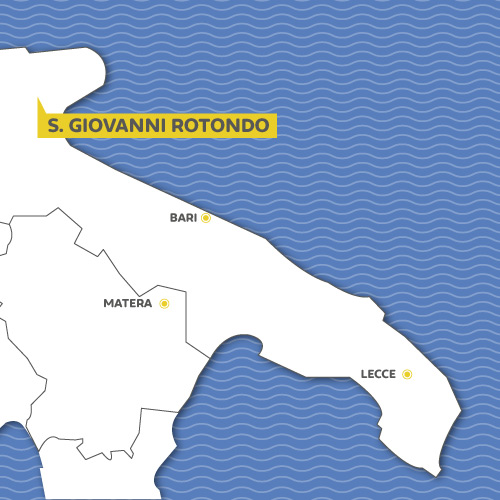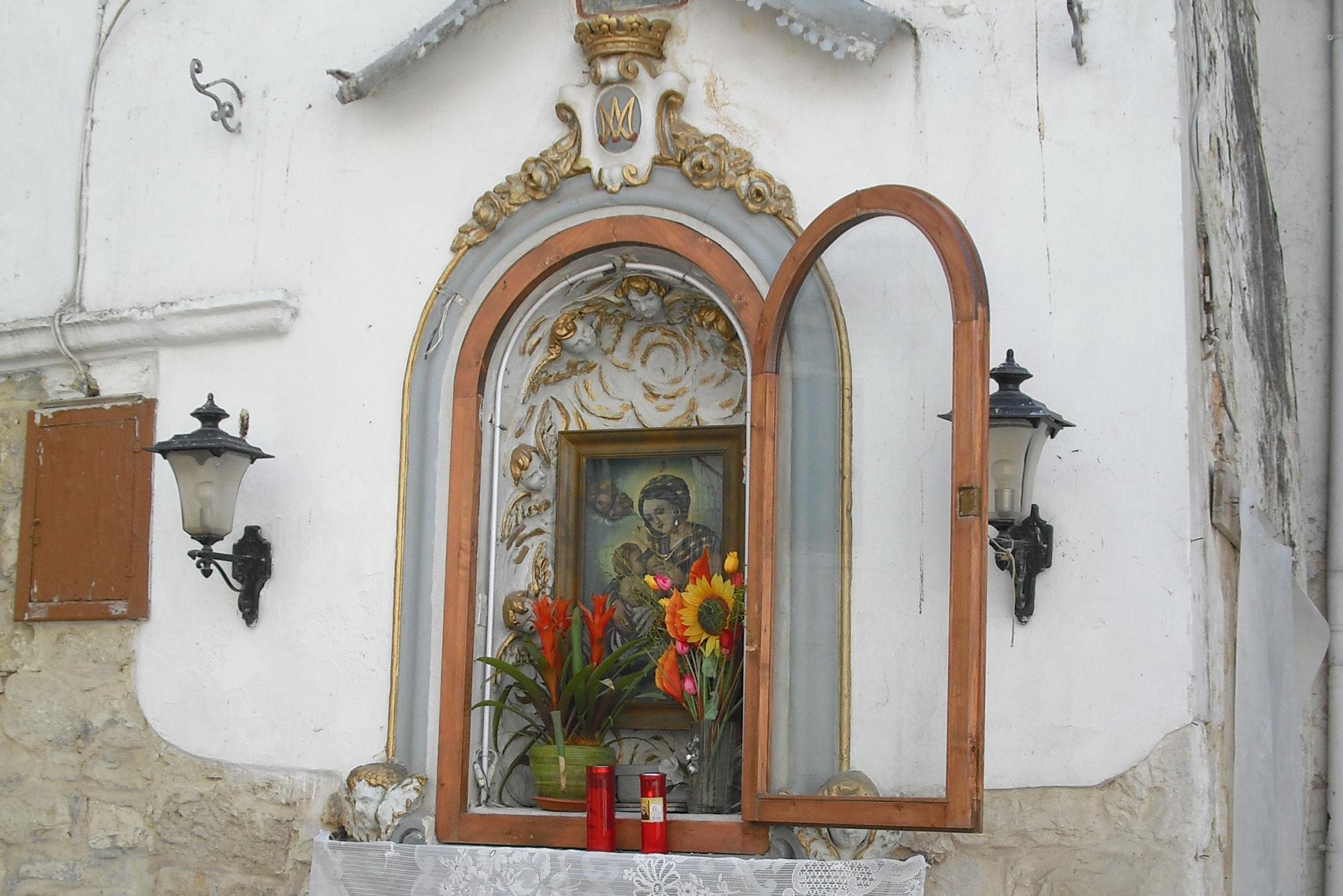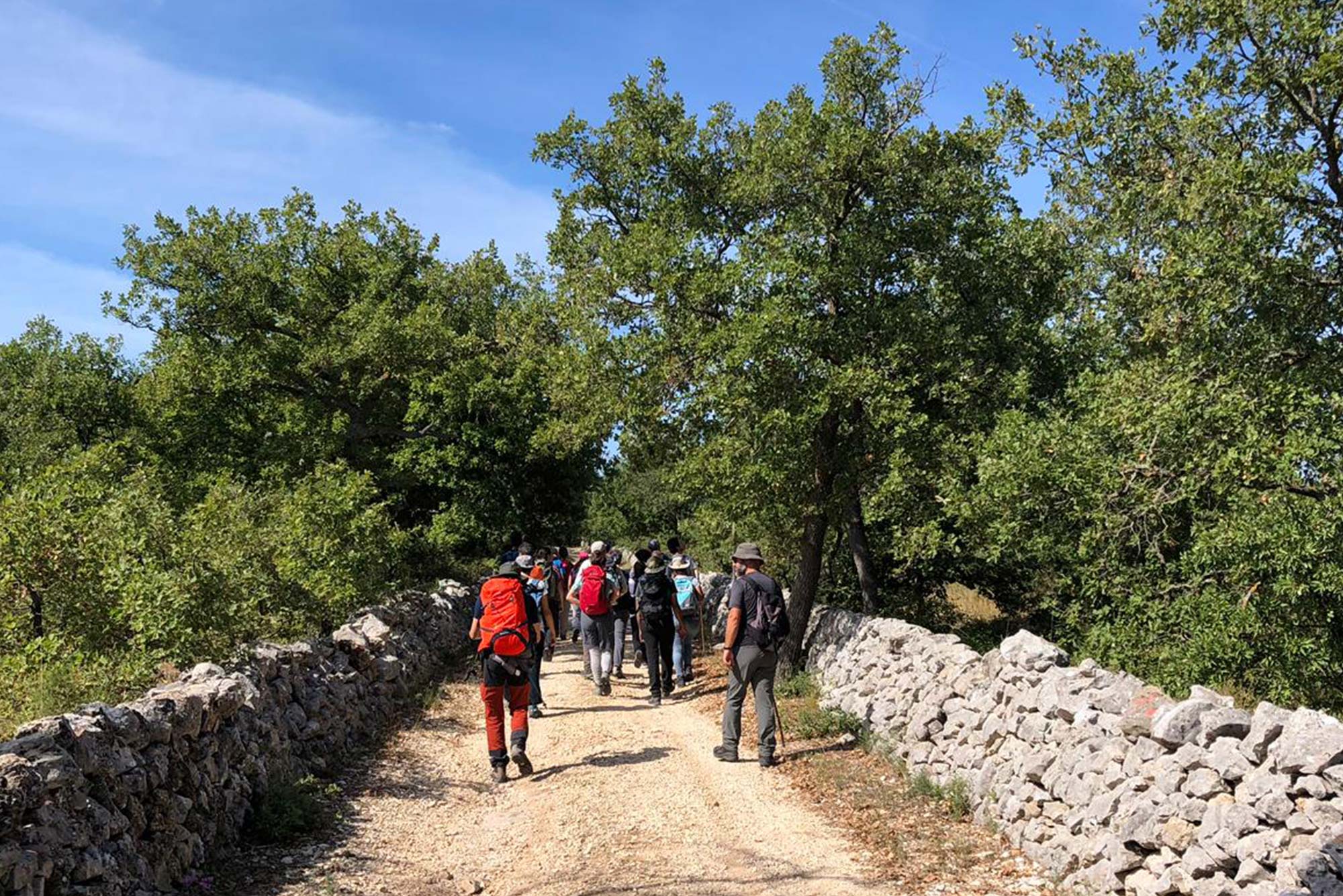San Giovanni Rotondo

San Giovanni Rotondo, an old medieval village, is nowadays one of the most important destination for international religious tourism, thanks to the devotion for Padre Pio.
San Giovanni Rotondo is located on the slopes of Calvo Mountain, the highest summit in the promontory, in a valley in the centre of Gargano, at an altitude of 600 metres, 20 km away from Monte Sant’Angelo and 30 km away from Foggia.
The small village, in the heart of Gargano National Park, is an important destination for international religious tourism, thanks to the priest Padre Pio from Pietralcina, who lived and worked here. The most important place of devotion is the crypt of the Convent of Santa Maria delle Grazie, which contains his relics and it is a pilgrims’ destination, nowadays kept inside the new complex planned by Renzo Piano.
The city walls, built at the behest of Frederik II and embellished by the cylindrical tower, nowadays the seat of the Museum of Popular Arts, surround the historic centre, dotted with places of worship such as the Church of Sant’Orsola and that of Sant’Onofrio and the Chapel Madonna di Loreto. Amid the streets of the centre, it is possible to catch sight of the churches of San Giuseppe partigiano, of San Nicola and that of Santa Caterina.
The Church of San Giovanni Battista, also called “della Rotonda”, is rich in history and it is was built on the ruins of a really ancient circular temple dedicated to God Janus and it gives the name to the town.
What to see:
Sanctuary of Saint Pio of Pietrelcina
Convent of Santa Maria delle Grazie
Church of Sant’Orsola
What to taste:
Troccoli
Vino rosso (U’filippon)

Votive shrines in Puglia
Since ancient times, man has wanted to establish a link with the land that he considers “his” by interpreting unusual events as supernatural signs: the will of God consecrating the bond. And so they arose, crossroads and places in which there were miraculous events or events which were difficult to reconcile with a rational explanation. They began to be considered sacred and distinguished from the modest chapels in which statues were placed. The coming of Christianity saw an introduction of new objects of devotion being placed inside these shrines, like statues of saints, of Mary, mother of Jesus, and of Christ. In line with their origins, the name “edicole” (shrines) derives from the Latin word “aedicula’, which means a small temple, tabernacle, a small sanctuary and, most probably, the shrines already existed in ancient Egypt and Greece. They were repudiated by the first Christians and slowly came back into accepted practice during the Medieval Age.

The Misthery of the devil's Jazzo
Going on vacation in Puglia often means staying in fortified farmhouses adapted for tourism, called masserias. They are found throughout the region, each one with characteristics tied to the unique nature of the specific area in which it is located. They are certainly some of the most prevalent rural buildings in this part of Italy, but they are not the only ones. Entering the region called Murgia, and within the sub-region of Gargano, you can find, together with the masserias, little houses called jazzes.